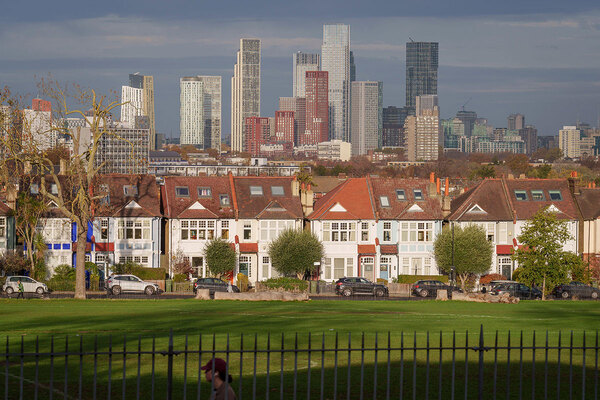Chill the right way: air conditioning won't solve the energy efficiency problem
As the government considers expanding the Boiler Upgrade Scheme grant to include air conditioning, are we solving the right problem in the right way, asks Marion Baeli, principal for sustainability and transformation at 10 Design
The UK faces two defining challenges: the rising cost of living and the urgent need to address climate change.
Under the latest Spending Review, the Department for Energy Security and Net Zero (DESNZ) received one of the largest increases in capital spending. While this is a step in the right direction, funding must be spent wisely so that the outcomes generate real returns through tax revenue, reduce public health costs and lower household bills.
To achieve this, we need to broaden the conversation. Making homes energy-efficient isn’t just about installing a heat pump or an air conditioning unit. True energy efficiency begins with making our homes fundamentally more capable of retaining heat in winter and staying cool in summer, like an efficient thermos. Over time, the lower running costs due to improved insulation and ventilation help offset the initial capital investment.
Our joint research with CIBSE, Retrofit Revisit: 10 Case Studies, monitored the performance of homes that were retrofitted a decade ago. Findings show that preventing heat loss through sealing gaps in the building fabric, reinforcing the thermal performance of walls, floors and roofs, and ensuring effective ventilation to supply fresh air around the clock, deliver the most consistent results in reducing energy demand and enhancing comfort. Regular maintenance is equally critical: cleaning gutters and replacing filters in ventilation systems ensures the home continues to perform as it should.
“Relying on air conditioning alone is like putting a plaster on a leaking pipe”
As climate change is making UK summers hotter, it is no surprise that more people are turning to air conditioning. Many homes simply were not built to cope with extreme heat. But relying on air conditioning alone is like putting a plaster on a leaking pipe. It may offer temporary relief, but it doesn’t fix the problem.
Air conditioning units, including air source heat pumps, come with hidden costs. They have high embodied carbon, use refrigerants that can be up to thousands of times more harmful than carbon dioxide and also leak frequently, and increase electricity demand, putting more pressure on an already stretched national grid. If we are not careful, we risk undoing progress on cutting emissions.
Rather than relying solely on mechanical solutions, we need to focus on passive solutions first. We need to rediscover the value of shading our windows to prevent overheating in homes. All new builds should include external shading devices, and more products should be developed to suit the specific features of UK sash windows to block out heat before resorting to expensive and environmentally damaging systems.
We also need to embrace the benefits of cross-ventilation and night purging to help our homes cool naturally. These simple, low-carbon measures reduce the need for mechanical cooling, lower our energy bills and improve comfort.
That said, there will be exceptions. Some homes, such as tower blocks with small, single-aspect layouts, may have no opportunity for external shading or cross-ventilation. In such cases, communal air conditioning systems may be necessary.
However, there is no excuse for poor design in new builds. These homes must be constructed with efficient fabric, proper shading and smart ventilation from the outset.
Encouragingly, there is a growing public appetite for change. People want homes that are comfortable, affordable and climate-friendly. But they need support to get there.
Government policy must guide them towards the right choices for both comfort and the climate: prioritising passive measures first, and only considering systems once these have been fully explored. Otherwise, we risk making the challenge even harder for ourselves.
Let’s not miss this opportunity. With the right policies, we can retrofit our way to a future that is cooler, cleaner and fairer for all, ensuring comfort in every season.
Marion Baeli, principal for sustainability and transformation, 10 Design, and member, UK Government Retrofit System Reform Advisory Panel



